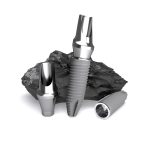Braces are no longer just for teenagers. In fact, a large number of adults are opting for orthodontic treatment, with one in four orthodontic patients being adults.
While some adults seek braces for cosmetic reasons, it’s important to note that braces serve more than just aesthetic purposes. Braces can offer significant benefits in addressing dental conditions such as an uneven bite that may lead to jaw problems or gaps between teeth that can impact gum health. This means that adults can maintain good oral health well into their later years.
What are Braces
Braces are dental devices designed to align teeth properly, improving both their function and appearance. Dr. Block notes that adult teeth are not set in a fixed position; they shift over time due to various factors like chewing and tongue pressure. These shifts can lead to misalignment, inflammation, and gum health issues.
Types of Braces
There is a range of braces options available for adults:
- Traditional/Metal Braces: These consist of stainless steel brackets and wires held together by rubber bands. Modern versions have smaller, less noticeable brackets.
- Ceramic Braces: Similar to metal braces but with clear or tooth-colored brackets, making them less visible.
- Lingual Braces: These are like traditional braces but placed on the inner surface of the teeth, making them less visible but possibly less comfortable initially.
- Aligners: Clear, plastic aligners are custom-made and offer a discreet alternative to braces. They should be worn most of the day and night.
- Self-Ligating Braces: These brackets clip onto the wire directly and may be clear, making them less noticeable and easier to clean.
- Power Chain Braces: These are often used with traditional or ceramic braces to apply more pressure and close gaps between teeth.
How Do Braces Work?
Braces gradually move teeth into proper alignment, improving gum health and creating a more favorable environment for teeth. The process involves applying gentle, controlled pressure to guide teeth into place over time, preventing the risk of loosening or damage.
Determining the Need for Braces
Orthodontists assess patients’ oral health to determine if braces are needed. Factors like crowding, spacing issues, overbites, underbites, or speech impediments can lead to recommendations for braces. However, significant gum disease or tooth decay may require treatment before braces are considered.
Duration of Treatment
The duration of orthodontic treatment can vary but typically ranges from a year and a half to two years. More complex cases may take longer, depending on the individual’s condition.
Invisible Braces for Adults
“Invisible braces” is a broad term encompassing clear aligners, clear braces with tooth-colored brackets, and lingual braces, all designed to minimize the appearance of orthodontic treatment.
Aligners vs. Braces
Both aligners and braces correct teeth and jaw alignment, but they work differently. Braces consist of metal brackets and wires, while clear aligners gradually adjust teeth alignment with removable, custom-made trays.
Power Chain Braces vs. Regular Braces
Power chain braces use connected strings of elastics, providing more force than regular braces and potentially shortening treatment time.
Accelerating Treatment
To speed up braces treatment, options like power chains and the following strategies are recommended:
- Wearing elastics as directed to assist with tooth alignment.
- Maintaining good oral hygiene to support faster tooth movement.
- Being cautious while eating to prevent wire damage.
Cost of Adult Braces
The cost of adult braces varies depending on factors like initial oral health. Here’s a general cost breakdown:
- Traditional/metal braces: $2,000 to $6,000
- Ceramic braces: $4,000 to $7,000
- Lingual braces: $5,000 to $10,000
- Self-ligating braces: $2,000 to $7,000
- Clear aligners: $2,000 to $6,000
Insurance coverage for adult braces varies, so it’s essential to check your plan’s details. Some dental plans may not cover orthodontic care for adults over 18. Payment plans, flexible spending accounts, and health savings accounts can help cover treatment costs.
Frequently Asked Questions
- Do braces hurt?
Braces may cause soreness initially, which usually subsides within a week. Over-the-counter pain medication can help manage discomfort. - How do you floss with braces?
Use floss or tools designed for braces, threading them above the wire between teeth. - How do you brush with braces?
Brush as you normally would but use a soft-bristle toothbrush or electric toothbrush. - What can you eat with braces?
You can enjoy most foods but avoid hard, sticky, or chewy items that may damage braces. - What can’t you eat with braces?
Avoid foods like nuts, caramels, licorice, and gum that can get stuck in braces, as well as hard fruits and vegetables unless cut into



